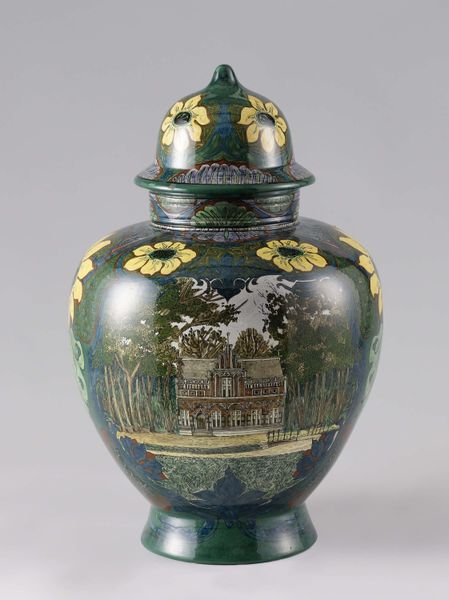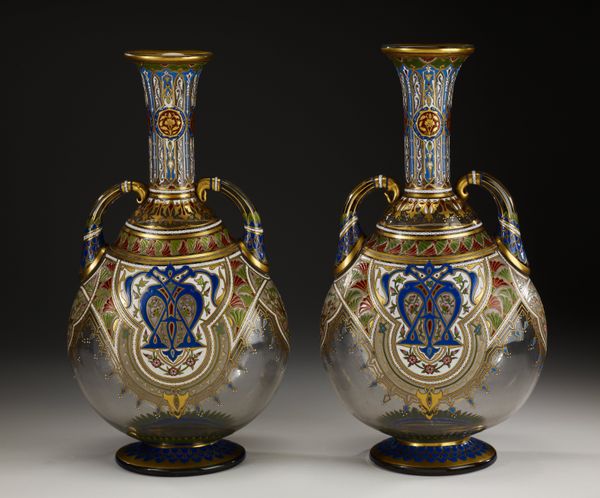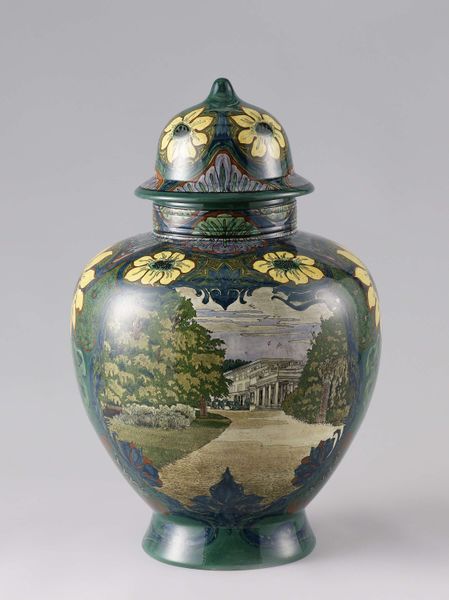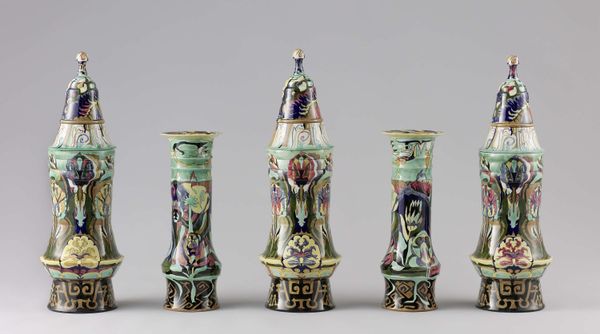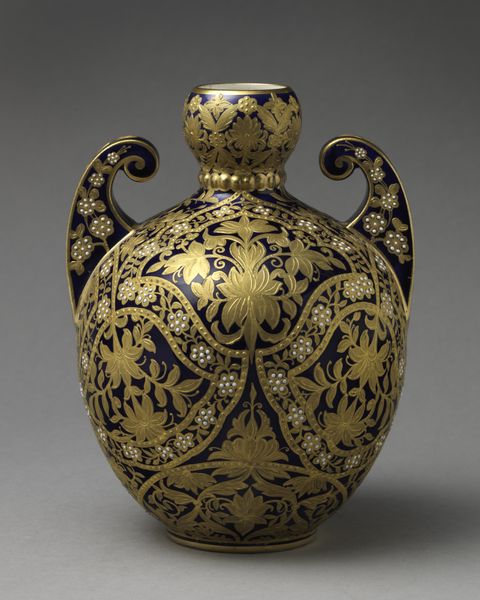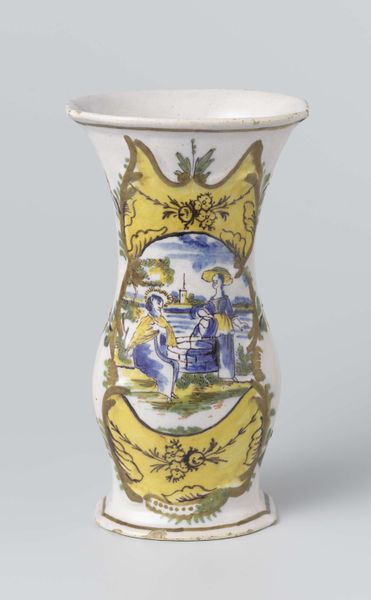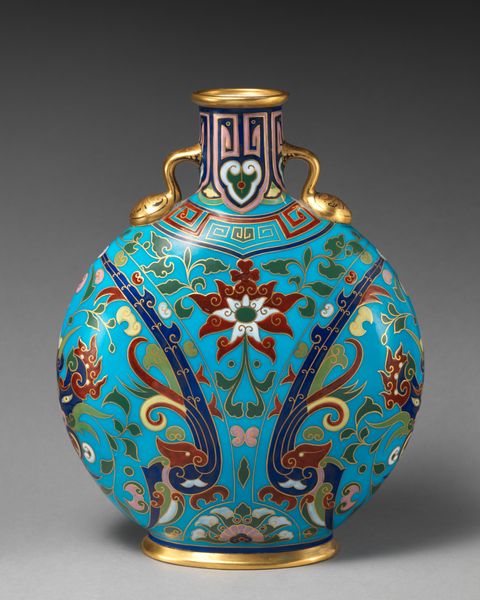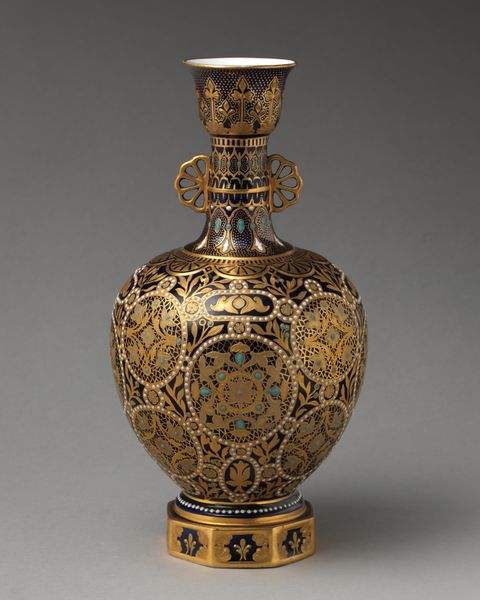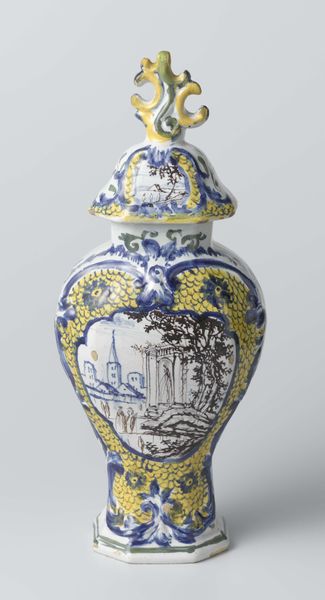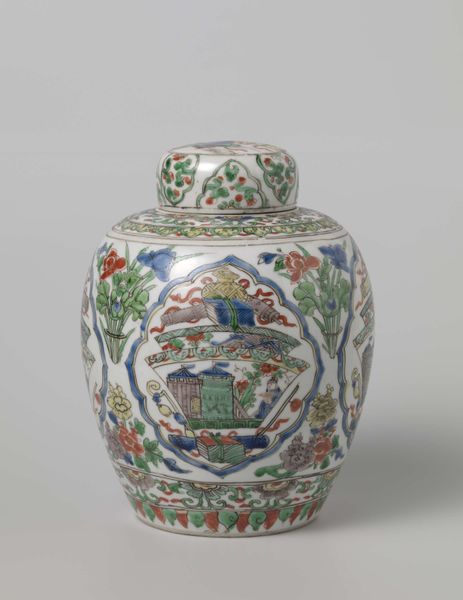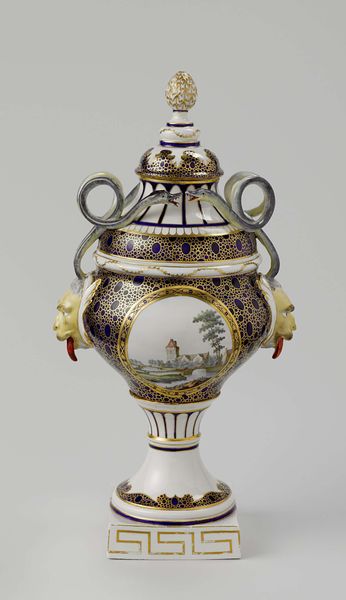
ceramic, sculpture
#
art-nouveau
#
ceramic
#
sculpture
#
ceramic
#
decorative-art
Copyright: Rijks Museum: Open Domain
Editor: Here we have “Three Vases with Lids”, made in 1896 by N.V. Haagsche Plateelfabriek Rozenburg. They are ceramic and feel both decorative and functional. I find the craftsmanship fascinating. What can you tell me about them? Curator: These vases offer a fascinating lens through which to examine the intersection of craft, industry, and societal values at the turn of the century. Consider the Rozenburg factory itself; a nexus of artistic labor, industrial processes, and commercial ambitions. How might the creation of these vases reflect the social stratification of the time? Editor: That's a very different perspective! I hadn’t really considered that. It looks so detailed, and I just thought of the artist's intentions. Curator: The detailed, hand-painted scenes combined with mass production techniques point to the complex negotiation between artistry and industrial output. What implications might these vases have for the commodification of art? Are they unique works or luxury goods made available by the processes of factory production? Editor: I guess I’m wondering about the tension between something handmade and mass-produced. The images seem unique, and perhaps created in separate studios, making them distinct from mass-produced products. Curator: Precisely. Let’s explore how the Art Nouveau style played into consumer culture at the time, focusing on both the decorative and functional qualities in this medium. By analyzing their production and use, we can gain valuable insights into the social context of the time. Editor: So, seeing these as part of an economic system rather than purely aesthetic statements gives them an added dimension. Thank you. Curator: And viewing the material culture through the lens of production offers insights that complement more traditional approaches.
Comments
No comments
Be the first to comment and join the conversation on the ultimate creative platform.

